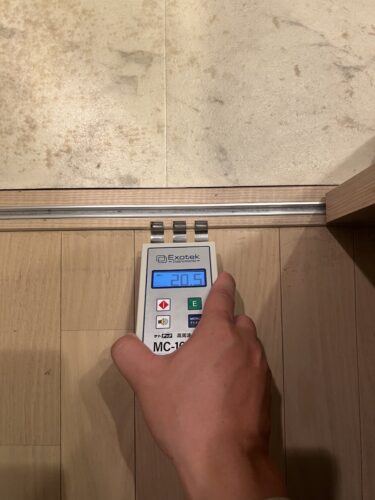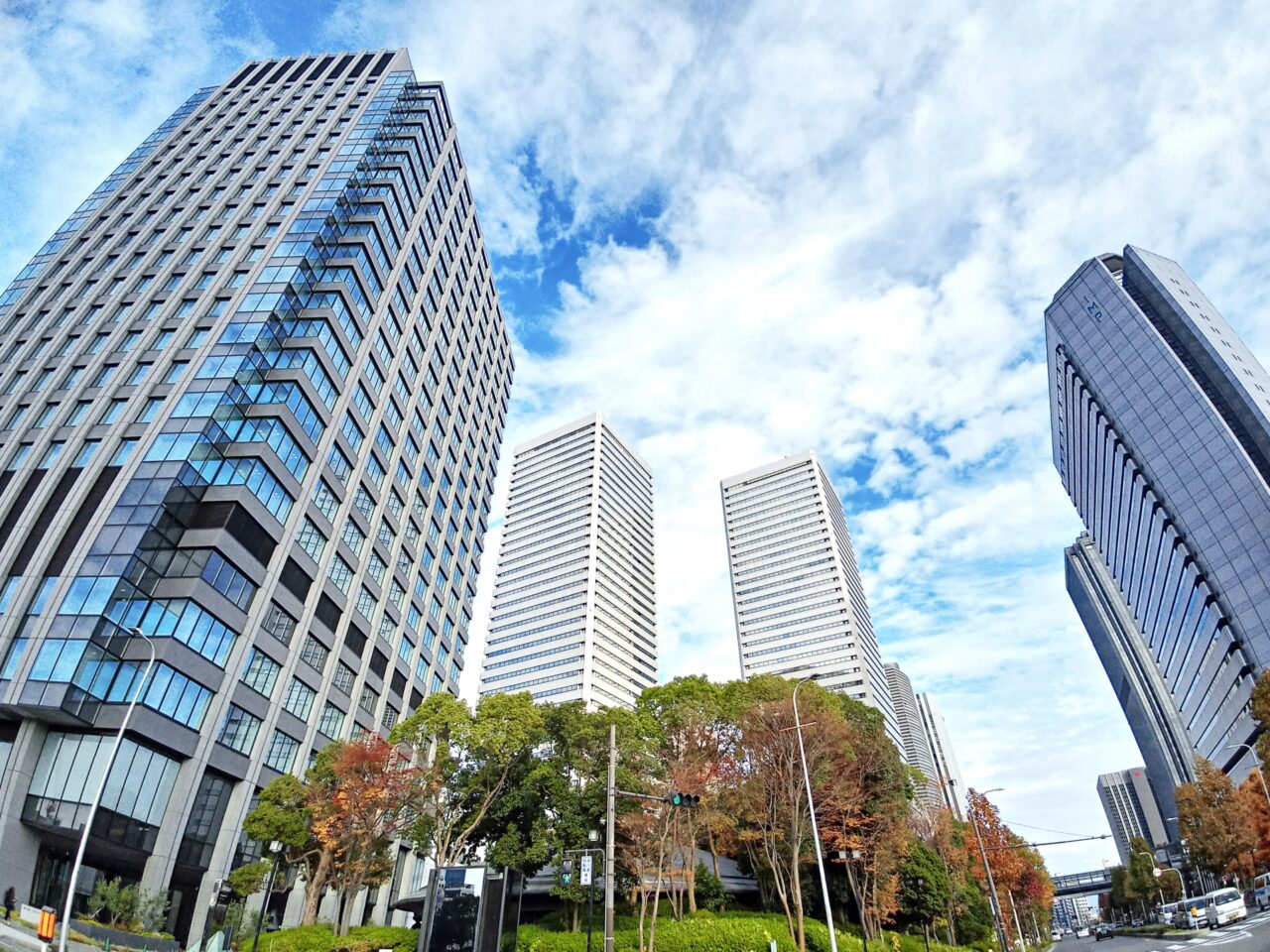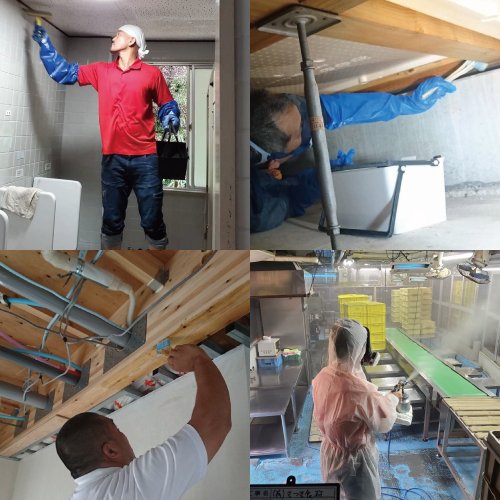Problem Statement: Despite its visual beauty, invisible mold is a growing problem that threatens property values and health in Minoh’s upscale residential neighborhoods.
What you will learn from reading the article: The article details the causes of mold growth and how to prevent it, including the mold risks inherent in highly insulated and airtight homes, the impact on air quality when visitors arrive, and poor ventilation due to water and special architectural design.
Benefits of reading the article: You will learn how to prevent property value loss and health hazards caused by mold, how to choose a reliable professional contractor, and gain a better understanding of the latest mold remediation technologies.
1. The Hidden Threat: How Invisible Mold Jeopardizes Property Value
Homes in Minoh City, known for their elegance and comfort, may harbor an unseen menace—mold that isn’t visible to the naked eye. This hidden mold can significantly impact property value, especially in high-insulation, airtight homes where mold thrives unnoticed, potentially causing severe damage if not detected early.
1-1. The Pitfalls of High-Insulation, Airtight Homes
Modern luxury homes, particularly in areas like Minoh, Sakurai, and Makiokoshi, often feature high-insulation and airtight designs to maintain comfortable indoor temperatures year-round. However, these designs can restrict airflow, leading to moisture accumulation—a perfect breeding ground for mold. Mold can develop in hidden areas such as behind insulation, within walls, attics, and under floors, making detection challenging.
1-2. Mold Risks Revealed During Property Showings
Even newly built, aesthetically pleasing luxury homes can reveal mold issues during resale or property showings. Discovering stains in the attic or a musty odor from underfloor inspection hatches can deter potential buyers, leading to price negotiations or even sale difficulties. Addressing these hidden mold problems often incurs high repair costs, complicating the selling process.
2. The Impact of Odor and Air Quality on Guest Impressions
For residents of luxury homes, the quality of indoor air and the presence of odors are crucial. In households that frequently host guests or parties, even slight discomfort can be perceived as a lack of cleanliness or poor maintenance.
2-1. Affluent Individuals’ Sensitivity to Air Quality
Affluent individuals often invest in air purifiers and ventilation systems, making them highly sensitive to air quality. Even a faint moldy smell can raise concerns about the home’s condition. In homes utilizing natural materials, the combination of inherent scents and mold odors can be particularly noticeable.
2-2. Mold Odors Affecting Perceptions and Trust
A moldy smell during a guest’s visit can significantly damage the home’s impression. An unusual odor upon entering can suggest inadequate maintenance. Luxury homes are expected to exude sophistication and cleanliness; any deviation can lead to perceptions of disorderliness, potentially affecting trust, especially among business visitors.
3. Ventilation Challenges Unique to High-Performance Homes
While high-insulation and airtight homes offer ideal energy efficiency, they can hinder natural ventilation, leading to poor humidity control and mold proliferation, especially in areas with insufficient airflow.
3-1. The Link Between Poor Natural Ventilation and Mold
Traditional Japanese homes, with their drafty designs, allowed for better moisture dissipation. In contrast, modern airtight homes trap humidity, especially at night when air conditioners and fans are off, leading to condensation and mold growth within walls and under floors. Without proper ventilation planning, such condensation can deteriorate indoor environments over time.
3-2. Condensation Issues from Floor Heating and Underfloor Storage
While floor heating provides warmth, it can create significant temperature differences between the floor and the underfloor space, leading to condensation. Underfloor storage areas, often poorly ventilated and infrequently used, can accumulate moisture, increasing mold risks. Storing items like food or paper here can result in deterioration and unpleasant odors, potentially causing health issues.
4. Maintaining Aesthetic Appeal in Wet Areas Amid Mold Threats
In luxury homes, wet areas like bathrooms and washrooms are integral to the overall design. Even minor mold presence can suggest neglect, making these areas high-pressure zones for aesthetic maintenance.
4-1. The Impression of Mold in Bathrooms and Washrooms
Bathrooms and washrooms are prone to moisture, creating environments conducive to mold. Even slight black spots on rubber seals or ceiling corners can compromise the sense of cleanliness. Luxury homes demand impeccable cleanliness, and visible mold is unacceptable. Regular cleaning may not suffice if mold roots remain, necessitating advanced maintenance for aesthetic preservation.
4-2. Mold Development on New Materials and Countermeasures
Modern bathrooms utilize diverse materials, many with anti-fouling and anti-mold treatments. However, these aren’t foolproof. Mold on new materials can be conspicuous and challenging to remove. Safe mold removal without damaging materials requires specialized knowledge and techniques, often necessitating professional intervention.
5. Ventilation Issues Due to Unique Architectural Designs
Luxury homes often feature architectural designs that, while beautiful and functional, can impair ventilation and create mold-prone environments.
5-1. Ventilation Challenges in Atrium Structures and Basements
Atrium structures offer openness and natural light but can cause unidirectional airflow, leading to moisture accumulation in certain areas. Basements or semi-underground garages, being in contact with the ground, experience significant temperature differences with the outside air, promoting condensation. Inadequate ventilation design in these spaces can trap moisture, allowing mold to spread within walls and floors.
5-2. Humidity Management in Wine Cellars and Storage Rooms
Some luxury homes include specialized spaces like wine cellars, storage rooms, or art storage areas, where temperature and humidity control are vital. Neglecting humidity management can lead to mold growth, damaging wine collections or valuable items. Regular inspections and maintenance are essential to prevent such issues.
6. Advanced Mold Countermeasures and Their Effectiveness
Traditional mold removal methods often fall short. Recently, advanced techniques that are gentle on materials and offer long-lasting effects have gained attention.
6-1. Benefits of Mold Removal Using the MIST Method
The MIST Method® is a proprietary technique that removes mold without damaging materials. By adjusting the pH and components of the treatment agents on-site, it effectively eliminates mold at its roots without burdening the target surfaces. This method doesn’t require scrubbing or scraping, making it suitable for delicate materials like wood, stone, and fabric. Post-removal, antimicrobial treatments are applied to prevent recurrence, ensuring both aesthetic maintenance and long-term prevention.
6-2. Importance of Regular Maintenance
Even after mold removal, it can quickly return under favorable conditions. In homes with poor ventilation or moisture-prone structures, annual professional inspections and maintenance are ideal. Regular assessments by specialists can detect hidden issues early, preventing severe damage.
7. Health Risks from Mold and Preventive Measures
Mold issues extend beyond appearance and odor, posing significant health risks, especially to children and the elderly with weaker immune systems.
7-1. Health Risks Posed by Mold
Mold spores float in the air and can enter the body through respiration, causing allergic reactions, asthma, rhinitis, skin conditions, and more. Prolonged exposure can lead to chronic health issues. Households with vulnerable individuals must prioritize indoor mold management.
7-2. Measures to Protect Family Health
Controlling humidity daily is the first step in safeguarding health. Regular use of dehumidifiers, ventilation, and cleaning of air conditioners are essential habits. For unseen mold risks, professional mold inspections and air quality assessments provide added assurance.
8. Legal Responses and Responsibilities Regarding Mold Issues
In luxury homes, mold problems can escalate into significant disputes over responsibility and compensation, especially shortly after construction or renovation, potentially requiring legal intervention between contractors and sellers.
8-1. Builders’ Responsibilities and Countermeasures
If mold appears post-handover, determining whether it’s due to construction defects or design flaws is crucial. Clear causes like inadequate ventilation planning or insulation errors can hold builders accountable under warranty obligations. In Japan, new homes are legally required to have a 10-year defect warranty, allowing for compensation if issues arise early. However, disputes often occur when lifestyle or maintenance lapses are cited as causes.
8-2. Consumer Rights and Action Guidelines
Should mold issues arise, identifying the cause is paramount. Engaging third-party inspections to ascertain construction or design faults is advisable. When approaching contractors for remediation, presenting evidence and calmly conveying facts is key. To prevent disputes, thoroughly reviewing defect handling and after-sales service terms during contract signing is essential.
9. Selecting Specialized Mold Countermeasure Professionals
General cleaning services often lack the expertise to handle mold issues effectively. Engaging specialists with the necessary skills and knowledge is crucial, especially for luxury homes where preserving materials is vital.
9-1. Identifying Reliable Professionals
Key considerations include the contractor’s track record and the safety of their treatment agents. Reviewing past projects to ensure they can handle various structures and materials indicates reliability. Additionally, confirming that the agents used are safe for humans and pets and environmentally friendly is important. Checking actual service details, photos, and reviews can further inform your decision.
9-2. Points to Note and Questions When Selecting Contractors
When obtaining estimates, clarify specifics such as the scope of work, removal methods, recurrence prevention measures, and warranty details. Superficial treatments like merely spraying agents pose high recurrence risks. Also, inquire whether they can address mold inside walls and adjust treatment agents based on different materials to meet the unique needs of luxury homes.
10. Conclusion: The Importance of Mold Countermeasures in Luxury Homes
In upscale residential areas like Minoh City, invisible mold poses a significant threat to property value and comfortable living. It affects various aspects, including asset value, guest impressions, aesthetics, and health.
10-1. Regular Inspections to Preserve Property Value
Maintaining property value necessitates regular inspections. Even if the exterior appears pristine, internal mold growth can severely impact resale evaluations. Comprehensive inspections, including hidden areas like walls, under floors, and attics, coupled with professional maintenance, are directly linked to preserving property value.
10-2. Habits to Maintain a Comfortable Living Environment
Daily practices such as conscious ventilation, humidity control, and proper cleaning are essential for a comfortable home. Annual professional inspections enable early detection and prevention of mold. Paying attention to hidden areas ensures the maintenance of a beautiful and comfortable living space, a standard expected of luxury homeowners.
For Mold Removal, Mold Countermeasures, and Renovations, Trust Taikou Kensou Co., Ltd.
In luxury residential areas, the issue of invisible mold cannot be addressed by appearance alone. Protecting property value, health, and comfortable living requires specialized measures to detect, thoroughly remove, and prevent mold recurrence. Taikou Kensou Co., Ltd. offers comprehensive services through three regionally rooted brands to address these housing concerns.
Mold Busters Osaka: Your Partner in Protecting Kansai’s Luxury Homes
Focusing on luxury residential areas in the Kansai region, especially Minoh, Sakurai, and Makiokoshi, we provide mold removal services using our proprietary “MIST Method®.” This technique safely and effectively eliminates mold without damaging materials, thoroughly addressing even invisible mold to preserve aesthetics and protect valuable assets.
Mold Removal Renovation Tokyo & Nagoya: Integrated Mold Countermeasures and Renovation Services
In the Kanto and Chubu regions, under the brands “Mold Removal Renovation Tokyo” and “Mold Removal Renovation Nagoya,” we offer combined renovation and mold removal services. Beyond mere mold elimination, we simultaneously renew deteriorated interiors and





